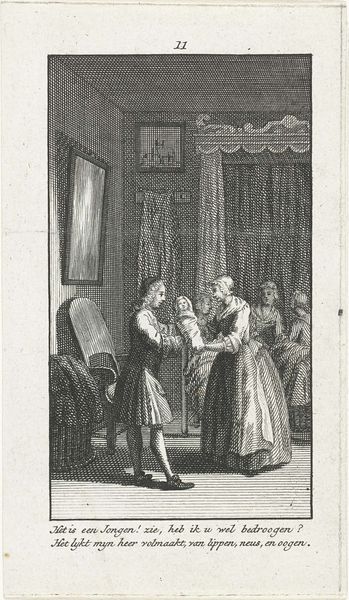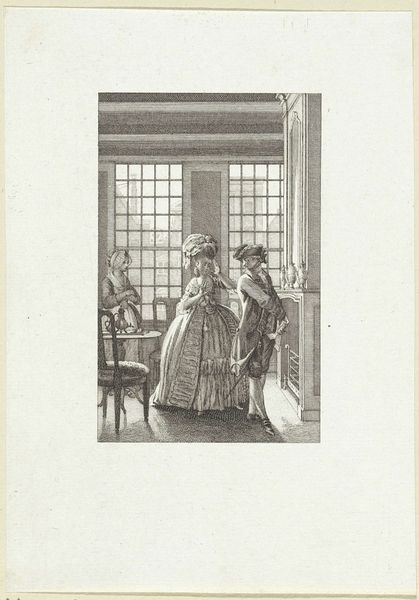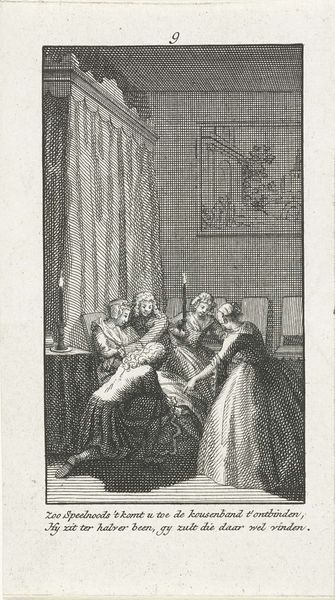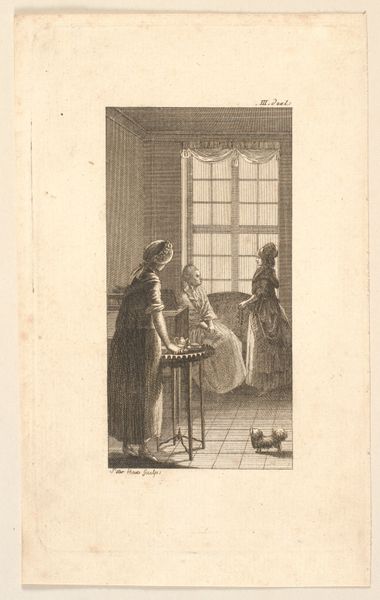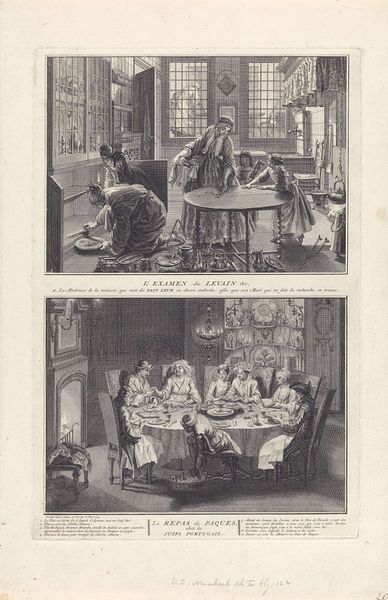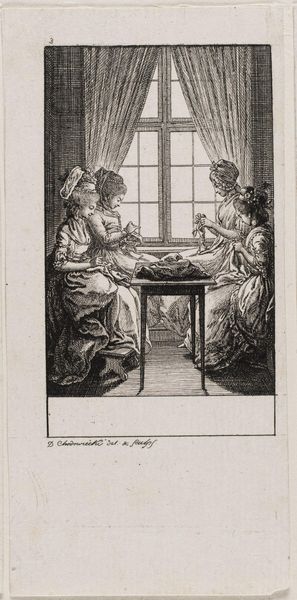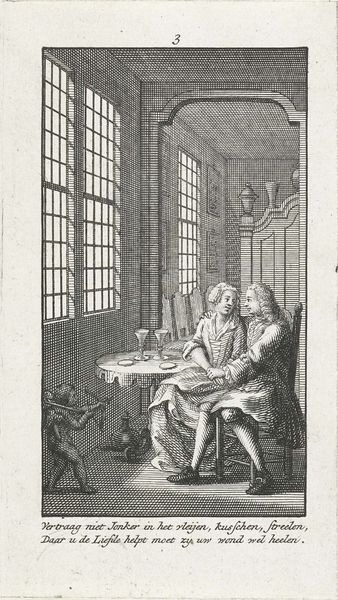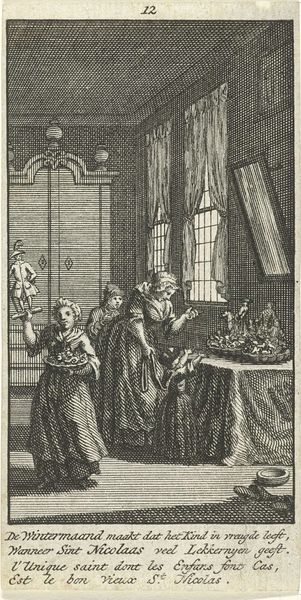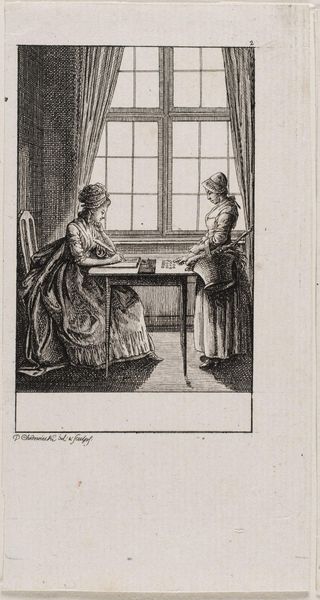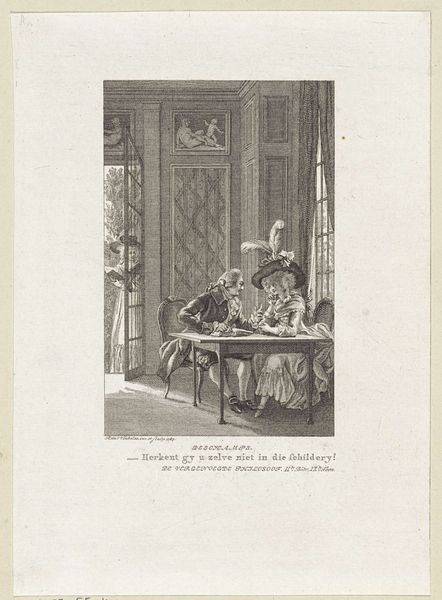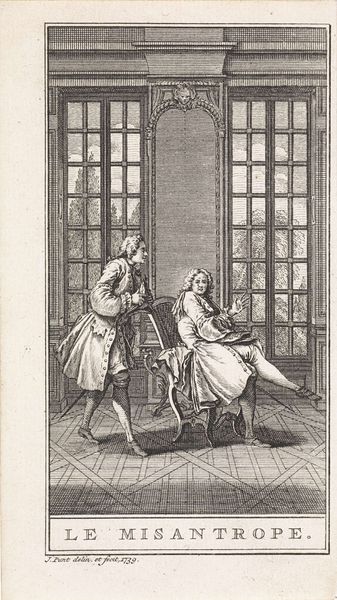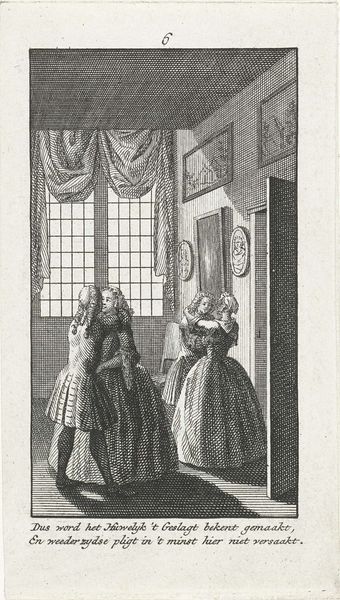
print, engraving
#
baroque
# print
#
genre-painting
#
engraving
Dimensions: height 108 mm, width 63 mm
Copyright: Rijks Museum: Open Domain
Editor: This engraving, "Versieren van de luiermand," or "Decorating the Diaper Basket," by Jan Caspar Philips, dates back to sometime between 1740 and 1760. It has a really intimate feel; like we're peering into a very private moment in someone's home. What stands out to you about it? Curator: Immediately, I consider its production. As a print, its distribution was potentially broad. Consider the social implications: is this scene meant to instruct, to idealize, or perhaps even satirize domesticity and motherhood in the mid-18th century? What details within the composition support a particular reading? Editor: I see. Well, there's a large table covered with fabric, and three women appear to be working on something – maybe sewing? One is facing away from us. The setting seems fairly humble, though they do have a grandfather clock. Does this image reinforce societal expectations of women? Curator: Precisely! We should ask, for whom was this print intended, and what cultural values were circulating regarding women, family, and domestic space? Note the text below the image—presumably reinforcing a moral lesson related to diligence. Are the women presented as actively engaged in productive labor, contributing to the household, or is their interaction interpreted through the male gaze and dominant class's perceptions? How might viewers then and now negotiate these meanings? Editor: That makes me look at it differently. So, beyond just seeing it as a genre scene, we can look at it as a statement on societal values about women’s roles and even class distinctions during that era? Curator: Exactly. The visual and textual components function together to construct meaning about these women's social and economic standing and their role within a changing society. Thinking critically about that reception makes it much richer. Editor: I hadn’t considered that the artist's intent might be to send a message about societal roles, or to uphold specific ideals. Now I’m definitely thinking more deeply about how prints can act as historical and social documents. Curator: Indeed. Understanding the interplay between artistic creation and socio-political context offers such an expanded view of this artwork.
Comments
No comments
Be the first to comment and join the conversation on the ultimate creative platform.

